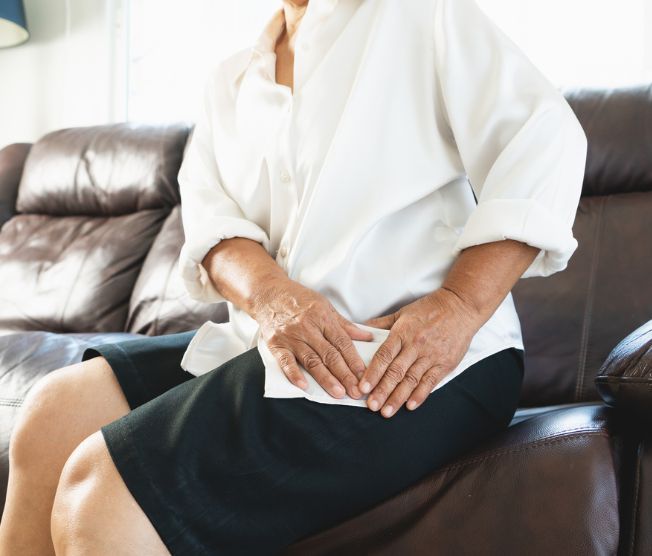 Hip fractures can be a life-changing injury for older adults, reducing their mobility and independence. Unfortunately, multiple age-related changes and health conditions increase risks for a hip fracture, including osteoporosis, balance issues and poor vision. For these injuries, recovery may involve a joint replacement and short-term rehab to relearn to walk and regain full range of motion.
Hip fractures can be a life-changing injury for older adults, reducing their mobility and independence. Unfortunately, multiple age-related changes and health conditions increase risks for a hip fracture, including osteoporosis, balance issues and poor vision. For these injuries, recovery may involve a joint replacement and short-term rehab to relearn to walk and regain full range of motion.
To reduce these risks, it’s important to stay on top of your health and remove trip hazards in your home. For yourself or a loved one, here’s what you should know.
What Is a Hip Fracture?
Although hip fractures can occur at any age, these injuries primarily affect older adults. Risks increase with age and the condition becomes potentially life threatening.
Your hip is composed of a ball-and-socket joint, where the thighbone comes in contact with your pelvic bone. The pelvic bone has a cup-like opening that supports the rounded head of the thighbone. Fractures affect the femoral head right below the joint and the intertrochanteric region further down may experience a break.
Risks for a Hip Fracture
Sudden, severe impacts like car accidents are a common cause of hip fractures for all ages. Yet for older adults, falls are the primary cause and risk increases based on bone strength.
Other risk factors include:
- Vision and balance changes, due to age or a medication side effect
- Sex, considering a woman’s bone density decreases at a faster rate
- Osteoporosis or a condition affecting how well you absorb vitamin D and calcium
- Taking medications that weaken bone density, like steroids
- Hypothyroidism, peripheral neuropathy, low blood sugar or Parkinson’s disease
- Experiencing a stroke
- Consuming less calcium and vitamin D
- Being underweight
- A sedentary lifestyle
- Regular tobacco and alcohol use
Signs of a Hip Fracture
Hip fractures may not always be obvious, especially if you didn’t take a fall. Signs include:
- Not being able to stand up or walk naturally
- Inability to put weight on one leg without pain
- Pain in the hip and groin area
- Bruising or swelling around the hip
- One leg looks shorter than the other
- One of your legs appears twisted
Ignoring these signs can expose older adults to multiple complications. Along with reduced independence, you’re at risk for:
- Blood clotting
- Bedsores and ulcers
- Muscle atrophy
- Infections
- Insufficient blood circulation
- Pneumonia
- Cognitive changes
Reducing Risks for a Hip Fracture
Staying physically active and getting enough calcium and vitamin D decrease the chances you will experience osteoporosis and subsequent hip fractures.
Older adults should also:
- Focus on improving balance through exercise or physical therapy
- Address lifestyle habits that affect bone density and increase fall risks
- Remove trip hazards from the home
- Maintain eye health, scheduling annual doctor visits
- Begin using a mobility device, if needed
Diagnosing a Hip Fracture
A doctor will request imaging to examine your leg and hip joint for signs of a break or hairline fracture. Treatment will depend on the severity of the break, location and other health conditions.
Most patients undergo surgery for one of the following:
- Repair screws, which support the bone as the fracture heals
- Partial or total hip replacement, in which you’re given an artificial socket or joint
Following surgery, short-term rehabilitation will work to improve your range of motion, joint strength and help adapt activities of daily living through physical and occupational therapy.
As you prepare for this procedure, turn to Avon Health Center for short-term rehabilitation. To learn more about our approach, contact us today.
« Avon Health Center Celebrates 80 Years

